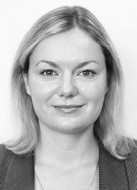Middle-distance runners’ skill-specific functionality profiling study
Фотографии:
ˑ:
PhD, Associate Professor E.V. Krivoruchenko1
P.I. Yakovlev2
M.V. Petrov2
M.G. Artamonova2
1Institute of Physical Culture and Sport of Ammosov North-Eastern Federal University, Yakutsk
2Yakut State Agricultural Academy, Yakutsk
The study profiles the middle-distance runners’ skill-specific functionality by the heart rate variability rates with a factor analysis. Selected for the study purposes were the following factors of different physiological effects: initial autonomic balance; sympathetic effects; vagal effects; humoral-metabolic effects; total neurohumoral controls; and unstable conditions. The combination and specific gravities of the factors were found skills-specific. The functionality tests of the sample groups showed dominance of the following factors in the following skill classes: initial autonomic balance (49%) in Class II; and total neurohumoral controls after physical loads in Class I and CMS (42% and 48%, respectively). Findings of the factor analysis show that the heart rate variability indices shall be taken into account in the prospects’ selection process and competitive progress forecasts in the training progress tests and analyses.
Keywords: track and field athletics, middle-distance running, functional condition, heart rate variability.
References
- Ilyin V.N., Krivoruchenko E.V. Perspektivy ispolzovaniya strukturno-lingvisticheskogo analiza pokazateley variabelnosti serdechnogo ritma dlya otsenki funktsionalnogo sostoyaniya sportsmenov [Perspectives of using structural linguistic analysis of heart rate variability indices to estimate athletes' functionality]. I Mezhdunar. kongr. «Terminy i ponyatiya v sfere fizicheskoy kultury' [Proc. Intern. congress 'Terms and concepts in physical education'], 22-23 December 2006. St. Petersburg: Lesgaft SUPEYT publ., 2006, pp. 87-92.
- Krasnoperova T.V., Shlyk N.I., Gerovskaya G.A. Sostoyanie tsentralnoy gemodinamiki u sportsmenov s razlichnym urovnem aktivnosti vegetativnoy regulyatsii ritma serdtsa nezavisimo ot vidov sporta v pokoe [State of central hemodynamics in athletes with different levels of activity of autonomic regulation of heart rate regardless of kinds of sport at rest]. Mater. II natsion. nauchno-prakt. konf. 'Teoriya i praktika ozdorovleniya naseleniya Rossii' [Proc. II nat. res.-practical conf. 'Theory and practice of recreation of Russian people], Izhevsk, 2005, pp. 139–140.
- Myakinchenko E.B., Seluyanov V.N. Razvitie lokalnoy myshechnoy vynoslivosti v tsiklicheskikh vidakh sporta [Development of local muscular endurance in cyclic sports]. Moscow: TVT Divizion publ., 2005, 338 p.
- Platonov V.N. Obschaya teoriya podgotovki sportsmenov v olimpiyskom sporte [General theory of athletic training in Olympic sports]. Kiev: Olimp. li-ra publ., 1997, pp. 313-328.
- Ilyin V.N., Batyrbekova L.M., Kurdanova M.Kh., Kurdanov Kh.A. Ritmokardiograficheskie metody otsenki funktsionalnogo sostoyaniya organizma cheloveka [Rhythmocardiographic methods for assessing functional state of human body]. Moscow: Ileksa; Stavropol: Servis-shkola publ., 2003, 80 p.
- Cherkashin I.A., Krivoruchenko E.V., Skryabin S.P., Okhlopkov P.P. Nauchno-metodicheskoe obespechenie podgotovki sportivnogo rezerva Respubliki Saha (Yakutiya) [Methodological support of training of sports reserve of Republic of Sakha (Yakutia)]. Teoriya i praktika fiz. kultury, 2015, no.10, pp. 51-53.




 Журнал "THEORY AND PRACTICE
Журнал "THEORY AND PRACTICE